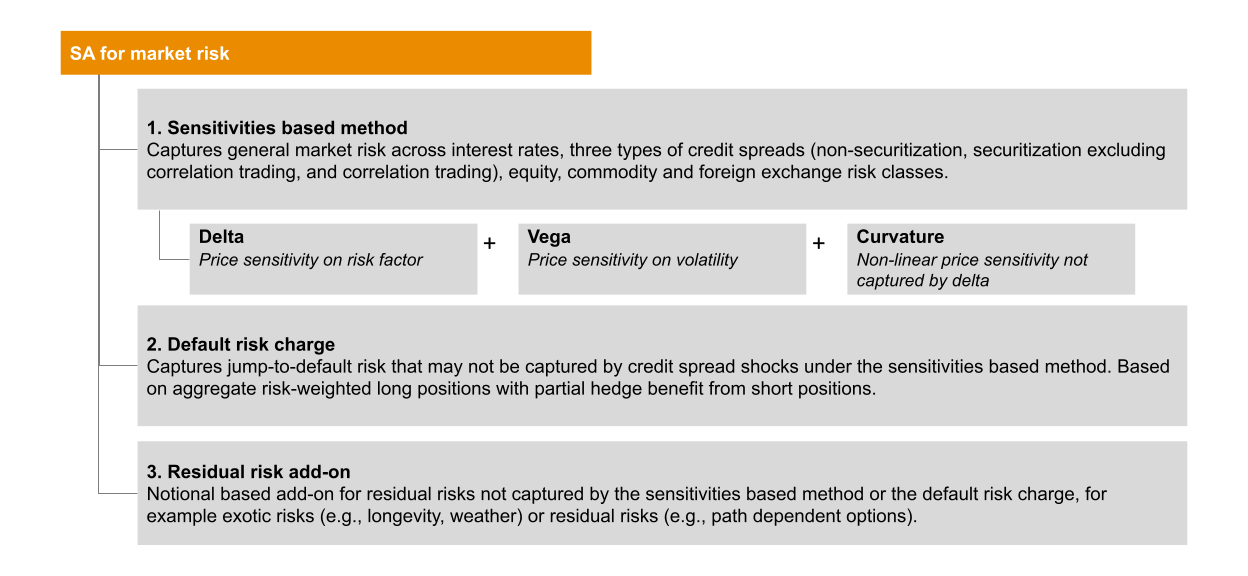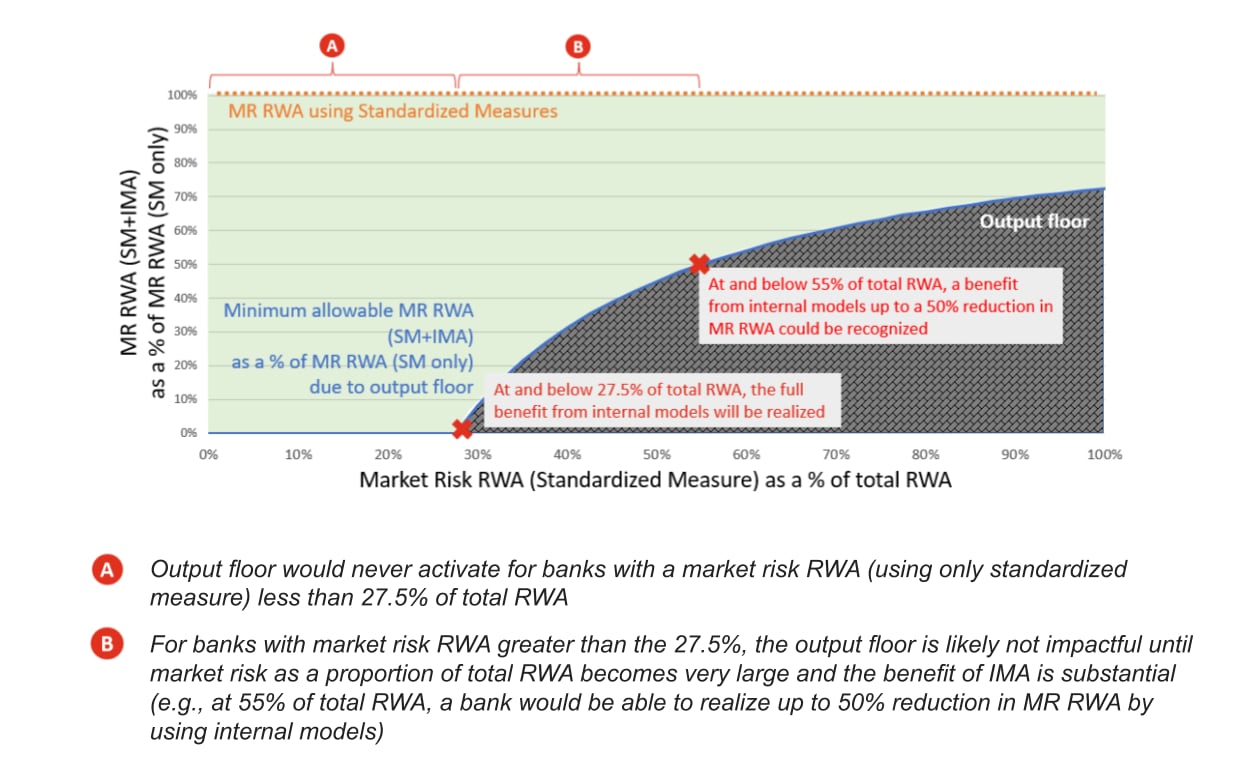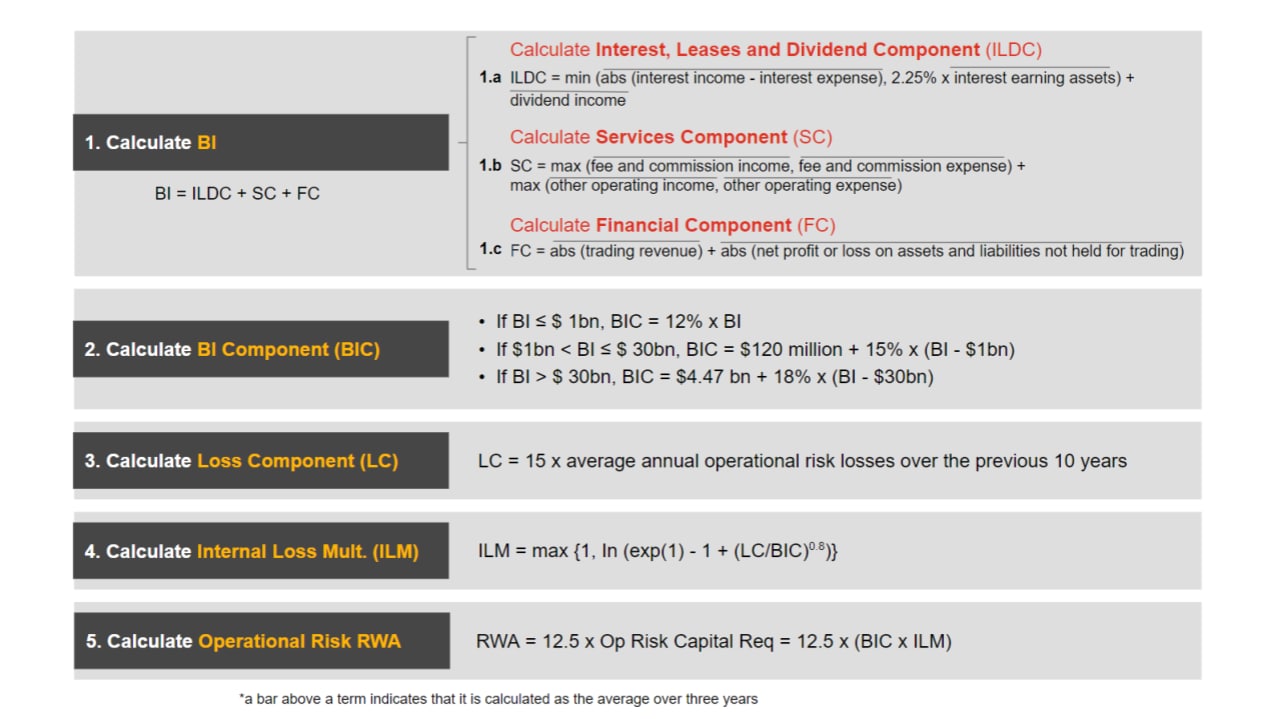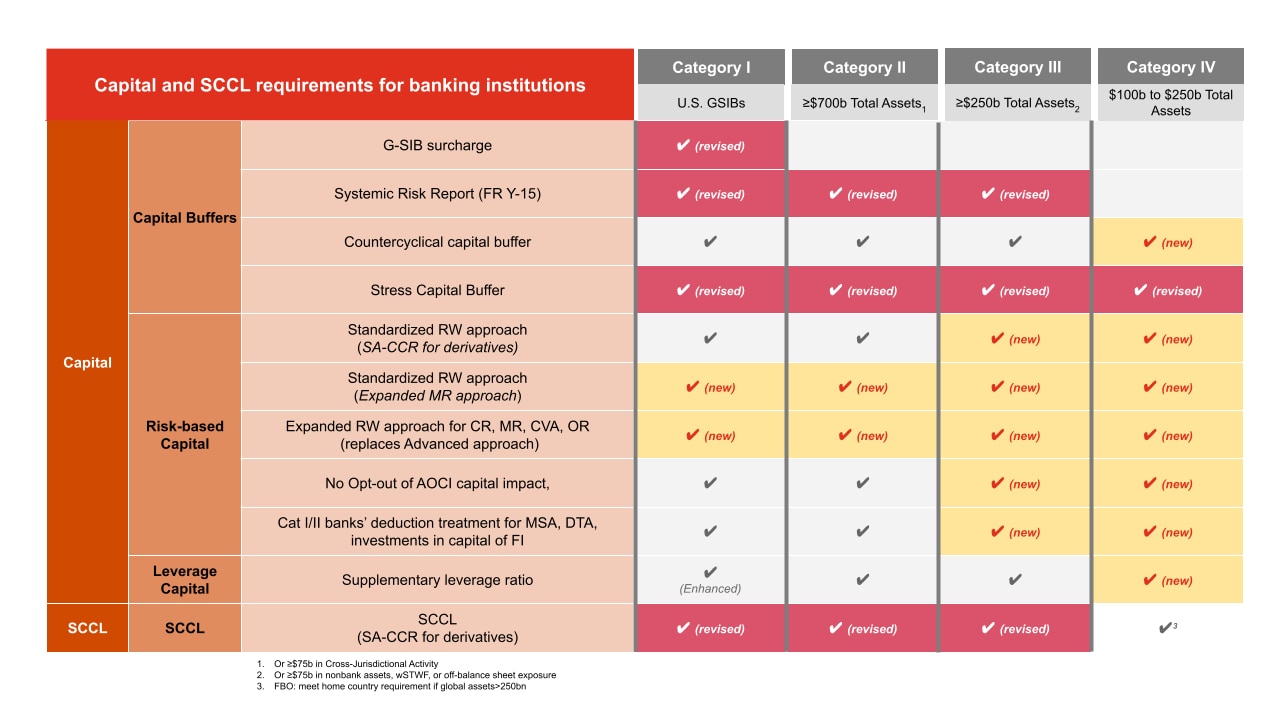{{item.title}}
{{item.text}}

{{item.text}}
On July 27th, the Fed, FDIC, and OCC released their long-awaited proposal to implement the final components of the Basel III agreement, also known as Basel III endgame. Separately, the Fed also proposed adjustments to the calculation of the capital surcharge for global systemically important banks (G-SIBs) and extensive amendments to the Systemic Risk Report (FR Y-15).
The early headline from the proposal was that its “expanded risk-based approach” for calculating risk-weighted assets (RWA) would result in increased capital requirements. Broadly, the regulatory agencies estimate varied impact across the categories of the Fed’s tailoring framework, with an aggregate increase in RWA by 24% for Category I and II banks and 9% for Category III and IV banks. The proposal would effectively undo capital rule tailoring across the four categories primarily by aligning the definition of capital for Category III and IV banks to the stricter construction currently applied to Category I and II banks. The change in the capital definition creates a cumulative impact beyond the headline 9% increase in RWA for Category III and IV banks.
Behind these numbers, closer analysis of the two proposals yields numerous changes that would not only impact banks’ capital requirements but also impose significant operational complexity and present strategic implications for their activities, products and services in light of changing capital costs. We discuss these impacts in more detail across the following areas:
Operational risk standardized approach would increase RWA by $2 trillion
Market risk RWA would rise by approximately 75% across all banks
Credit risk diverges from international standards and adds significant complexity
Tailoring of capital requirements substantially reversed for banks below $700 billion
Significant operational changes are needed to address governance, data and stress testing
G-SIB surcharge changes would increase capital requirements by $13 billion
While the proposals are open for comment until November 30, 2023, it will still be a tight timeframe for banks to digest the proposals, determine how it affects them, and organize their comments to focus on areas where they can make the strongest case for relief in the final rules. The lack of initial concessions and multiple dissents by Fed and FDIC board members indicate there are components of Basel III endgame that may well be adjusted before the rule is finalized.
The regulatory agencies expect to finalize the proposals with enough time to take effect on July 1, 2025 and have a three-year phase in of capital ratio impact until June 30, 2028. However, banks may still find it challenging to complete the necessary transformation programs to prepare their updated RWA calculation approaches by 2025.
Basel III endgame is a significant regulatory capital overhaul. Banks should be looking at this beyond simply a compliance exercise in calculating numbers as it will have far-reaching implications to their capital management, business strategy and operations.
The proposal replaces the current internal models based approach (i.e. the advanced measurement approach) with a new standardized approach (SA) for operational risk that is partially aligned to the Basel framework. The proposed standardized operational risk RWA formula has two main components:
The proposal expands the scope of market risk capital requirements to all Category I through IV banks and introduces a new framework for standardized market risk capital that all in-scope firms will need to implement, which is expected to result in higher market risk capital requirements. In addition, market risk is the only risk stripe for which the proposal would allow the continued use of internal models, but it would subject internal models approach (IMA) trading desks to enhanced supervisory standards, including pre-approval of models by the regulatory agencies.
The proposal expands the scope for market risk RWA requirements to all Category I through IV banks. Many of these banks were already captured by the current market risk scope (which currently includes those with aggregate trading assets and liabilities over $1 billion or 10% of total assets); however, we estimate an additional 10 banks would be included due to the new Category I through IV bank requirements. For those firms outside of Category I through IV, the aggregate trading assets and liabilities threshold is proposed to increase to $5 billion, which could result in a handful of banks no longer being required to consider market risk capital RWA.
The proposal introduces a new risk sensitivity-based SA for calculating market risk RWA that is expected to result in a higher market risk capital requirement (approximately 70-75% increase based on analysis provided in the proposal) as compared to current approaches. The new SA consists of three main components:
The proposal would replace the current internal models-based calculation of credit RWA with the expanded risk-based approach. It would also add more granular counterparty types with distinct risk-weighting, expand data requirements and increase operational complexity. Credit1 RWA is generally expected to decline versus current standardized U.S. rules, but the proposal deviates from the Basel committee framework as well as implementations in other jurisdictions, creating potential competitiveness concerns for U.S. banks. The changes in the credit RWA calculator processes are pervasive, covering almost all exposure types, and therefore would require banks to make significant enhancements to current operational processes, data, controls, calculation logic, systems, and aggregation and reporting capabilities.
1 The proposal includes equity risk carved out as a separate category in the expanded approach
In addition to including Category III and IV banks in the scope of the change to calculating RWA, the proposal would require them to apply some of the stringent requirements that currently only apply to Category I and II banks, effectively merging the four categories when it comes to capital requirements. Changes to capital deductions and inclusions for Category III and IV banks would be operationally challenging to implement and leave these banks with lower available capital.
2 Minus certain adjustments and deductions
Under the proposal, banks would have to calculate RWA under multiple approaches in order to assess the Collins and output floors.3 This is operationally complex, and the SA and output floor are unlikely to create a binding constraint.
Banks would be required to calculate RWA under the SA and the expanded risk-based approach. The SA remains largely unchanged except that all large banks must use the revised framework for market risk and Category III and IV must use SA-CCR for derivatives exposures. The SA would also continue to impose the Collins floor, requiring banks to be bound by the higher of the two approaches.
The proposal introduces an output floor that limits the benefit a bank may receive by using IMA for calculating market risk RWA. Although the output floor is set at the same level as in the Basel framework, it may not constrain banks in the same way in the United States as the Basel framework allows usage of the IMA under all risk stripes, while the United States only allows its usage under market risk thereby limiting the degree to which the floor can constrain the capital benefit.
3 The Collins Amendment requires that “generally applicable” risk-based capital requirements serve as a floor for banking institutions’ regulatory capital. In their implementation of the Basel III capital rules, US regulators specified that capital requirements calculated under the SA would serve as the Amendment’s mandated floor.
Implementing Basel III endgame would require large-scale efforts and coordination between functions as the proposal adds completely new calculations and requirements.
The Fed separately proposed amendments to the G-SIB surcharge methodology and Systemic Risk Report (FR Y-15) that would increase capital requirements for G-SIBs. These changes would further drive firms to re-evaluate their business strategies in light of incremental capital burdens as well as operational and compliance complexity.
Changes in the G-SIB surcharge proposal would result in seven foreign banks and two intermediate holding companies (IHCs) moving to Category II from Category III or IV, creating substantial new liquidity and resolution planning requirements that would be difficult and costly to implement.
{{item.text}}

{{item.text}}




